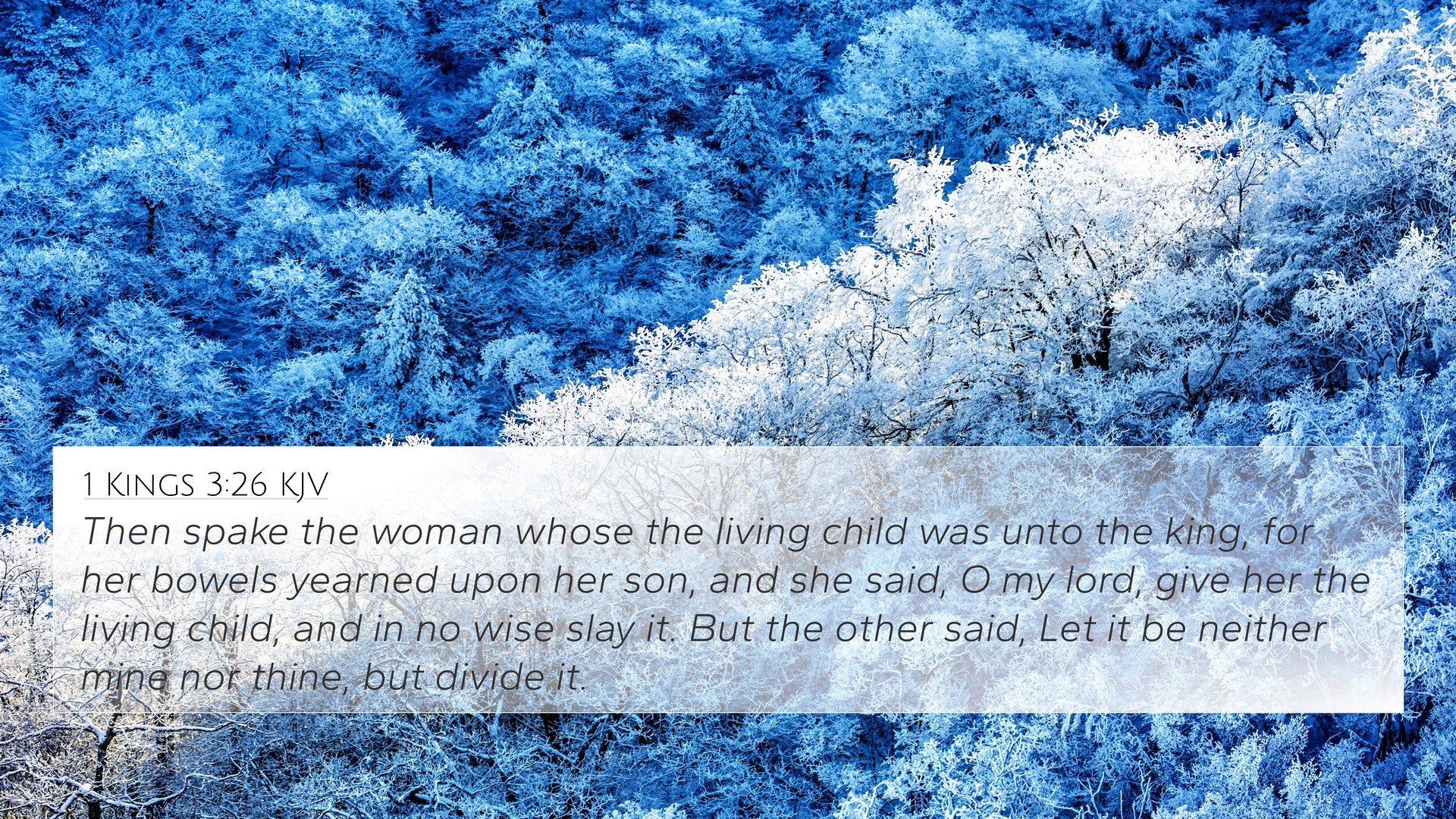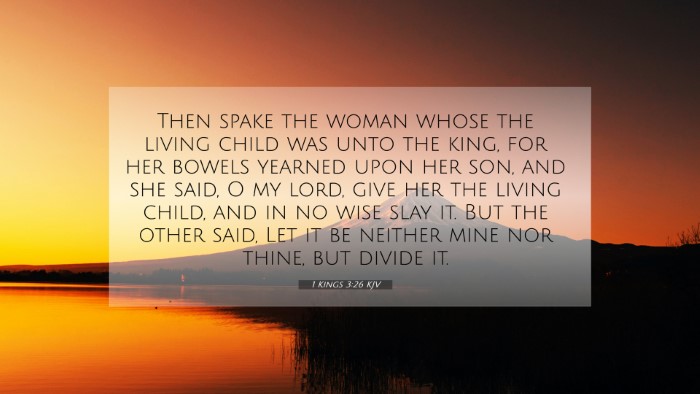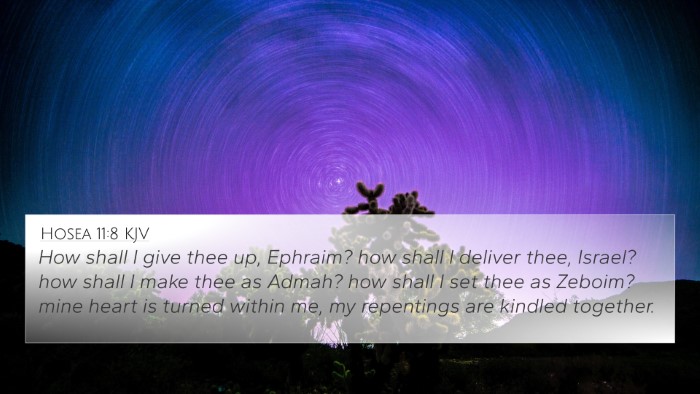Understanding 1 Kings 3:26
Verse: 1 Kings 3:26 - "Then the woman whose son was alive spoke to the king, for she yearned with compassion for her son; and she said, 'O my lord, give her the living child, and by no means kill him!' But the other woman said, 'Let him be neither mine nor yours, but divide him.'
Summary of the Verse
This verse showcases the wisdom of King Solomon in a profound case of maternal love and true selflessness. The narrative illustrates a unique test to reveal the true mother of the child. The woman who cared for the child demonstrated her genuine love by offering to relinquish her claim rather than see her child harmed.
Commentary Insights
According to Matthew Henry, this verse reveals the nature of true maternal instincts and the depth of a mother’s love. Those who are willing to sacrifice their desires for the wellbeing of their children truly embody the essence of love. Solomon’s wisdom shines through as he discerns the genuine mother by her selfless act.
Albert Barnes notes that Solomon's decision to propose the division of the child was a brilliant stroke to draw out the truth. He illustrates the contrasting responses of the two women, highlighting that true love will not allow harm to come to one’s child, showcasing the link between love and sacrifice.
Adam Clarke also emphasizes the social and emotional dimensions of the narrative. He explores the cultural implications of motherhood during that era and how Solomon's wisdom not only resolved the immediate conflict but also reinforced the value of maternal love in the society of Israel.
Cross-References and Thematic Connections
This verse is connected to several biblical themes and stories, underscoring the concepts of wisdom, love, and sacrifice. Some notable cross-references include:
- Proverbs 4:7 - "Wisdom is the principal thing; therefore get wisdom..." This underlines the value of wisdom which Solomon exemplifies.
- 1 Samuel 16:7 - "For the Lord sees not as man sees: man looks on the outward appearance, but the Lord looks on the heart." This reflects on discerning true intentions.
- John 15:13 - "Greater love has no one than this, than to lay down one's life for his friends." This amplifies the theme of selfless love found in the story.
- Matthew 5:37 - "But let your 'Yes' be 'Yes,' and your 'No,' 'No.' For whatever is more than these is from the evil one." This highlights integrity and truthfulness that Solomon sought.
- Romans 13:10 - "Love does no wrong to a neighbor; therefore love is the fulfilling of the law." This encourages the principle of love as central to moral living.
- Ecclesiastes 7:12 - "For wisdom is a defense as money is a defense; but the excellence of knowledge is that wisdom gives life to those who have it." Illustrates the practical benefits of wisdom.
- Luke 6:45 - "A good man out of the good treasure of his heart brings forth good; and an evil man out of the evil treasure of his heart brings forth evil." This mirrors Solomon's discernment of character.
Applications in Biblical Studies
1 Kings 3:26 serves as a significant case study in the realm of cross-referencing biblical texts. The themes presented are explored in both the Old and New Testaments, allowing for a deeper understanding of scriptural wisdom and love. By employing tools for Bible cross-referencing, scholars and readers alike can glean more profound insights into the nature of human relationships and divine wisdom.
Methods for Cross-Referencing
When delving into the connections between Bible verses, one effective approach is:
- Utilize a bible concordance to locate key terms and themes.
- Consult a bible cross-reference guide for thematic explorations.
- Engage in cross-reference Bible study methods to draw parallels and contrasts between related scriptures.
Conclusion
The story within 1 Kings 3:26, through the lens of public domain commentaries, not only provides an engaging narrative but also serves as an essential point of reference for the themes of wisdom and love. It encourages readers to explore further into the inter-Biblical dialogue and thematic connections present throughout scripture.












